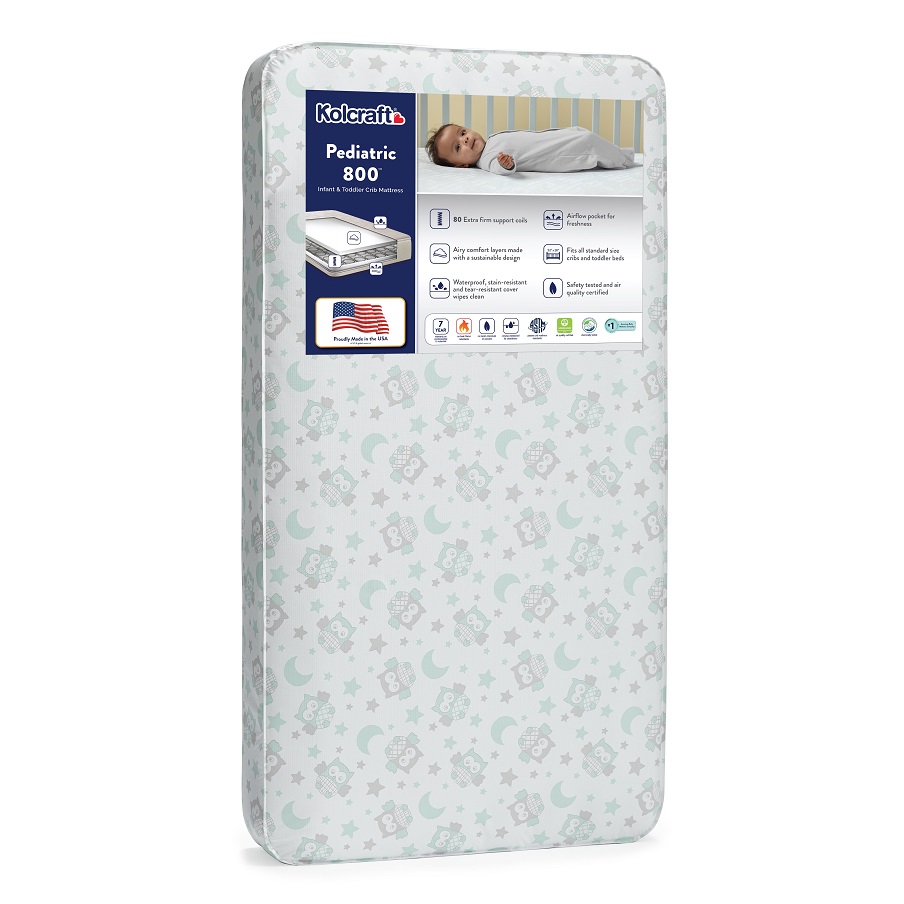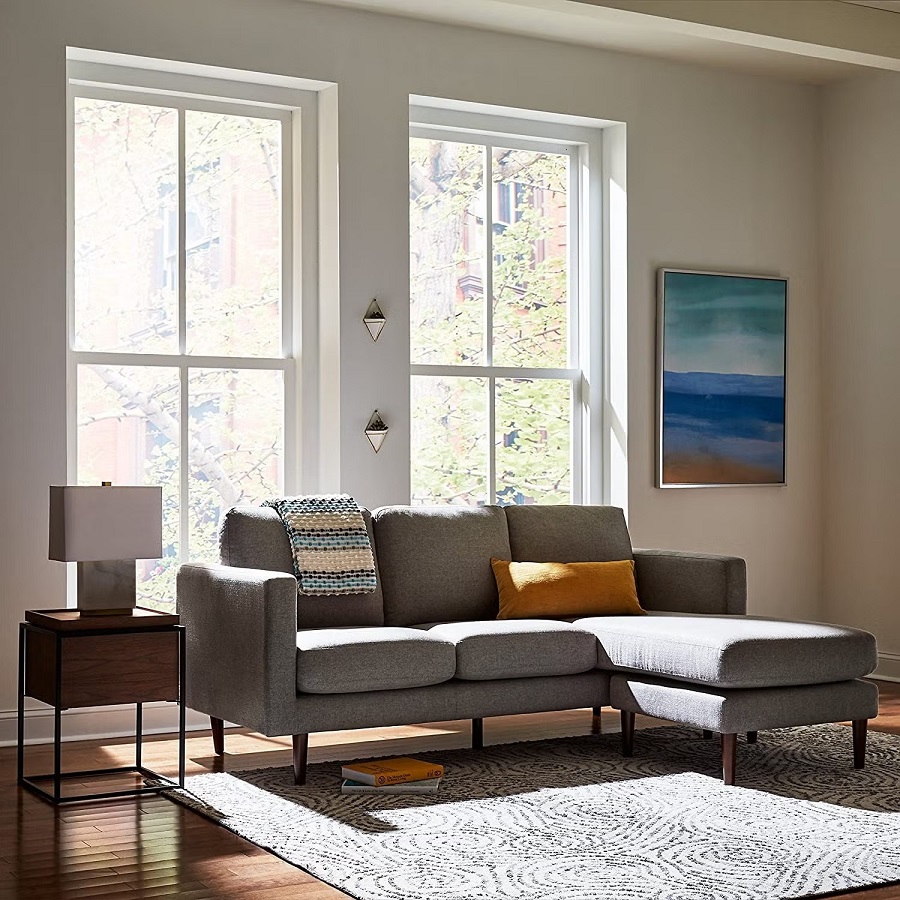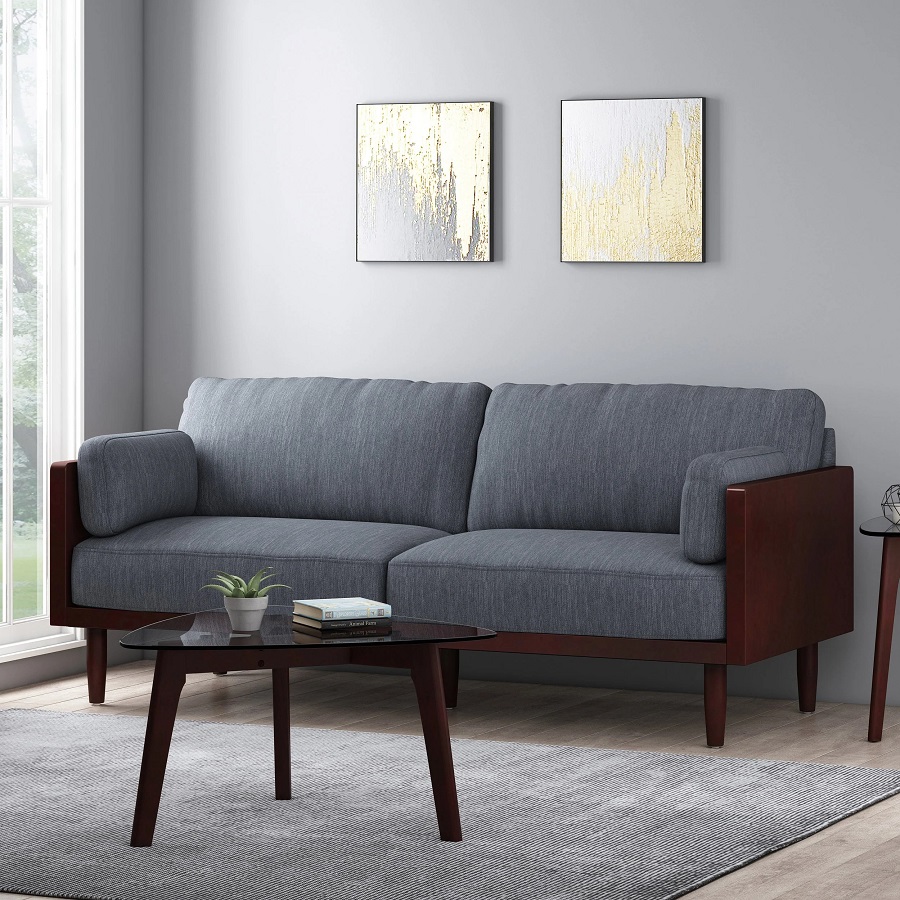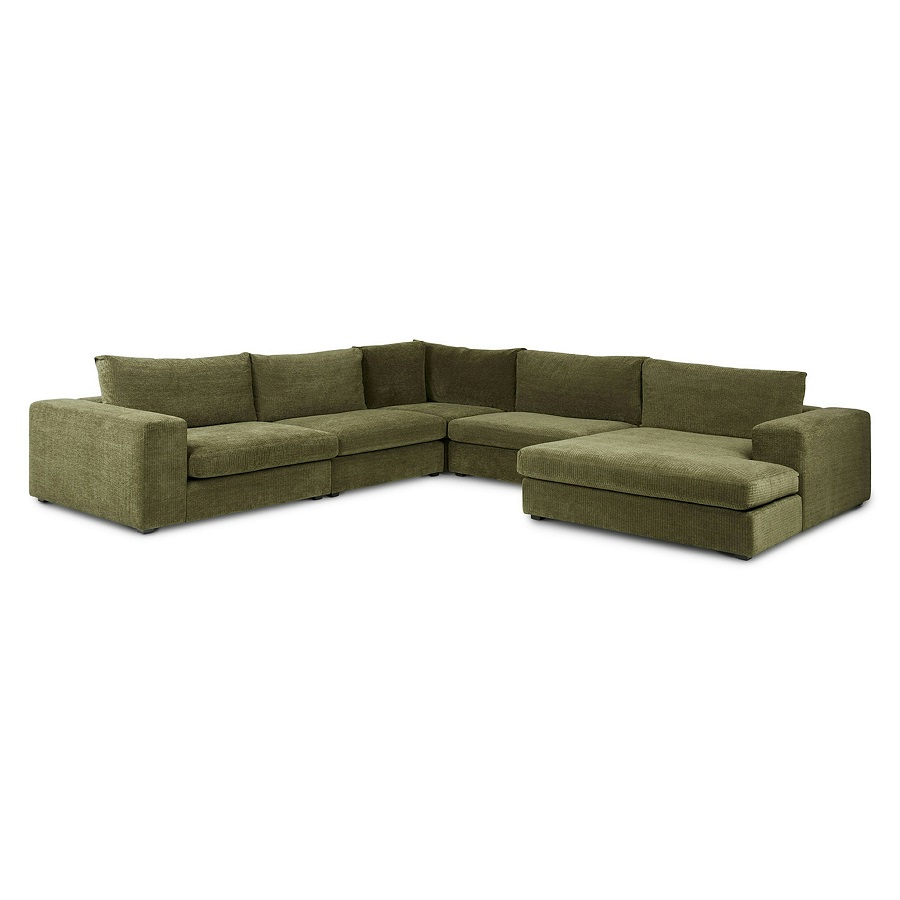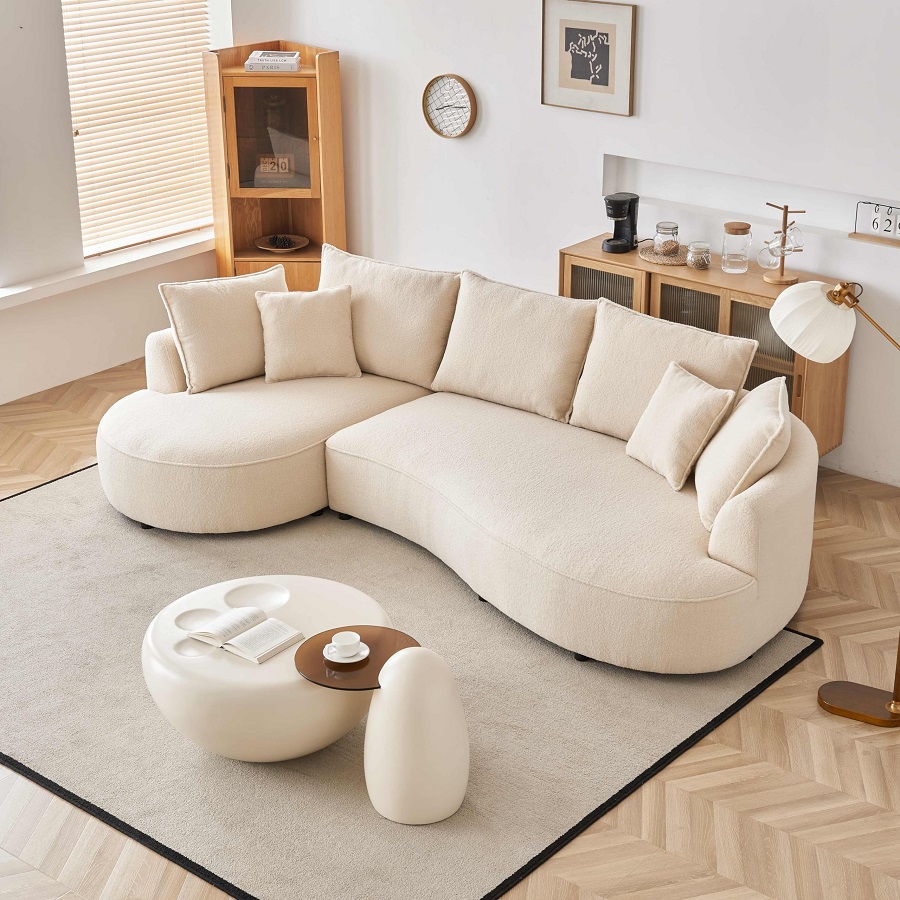Understanding the Different Crib Sizes
Navigating crib sizes is key for your baby’s comfort and safety. From spacious standards to mini options, each has its own mattress size.
Standard Cribs and Their Mattress Size
Standard cribs are larger, supporting growth for years. They fit mattresses around 28 inches by 52 inches.
Mini Cribs: A Compact Solution
Mini cribs save space in small rooms. Their mattresses are typically 24 inches by 38 inches.
Specialty Crib Types and Sizes
Unique cribs like round or oval shapes often include custom mattresses to fit perfectly.
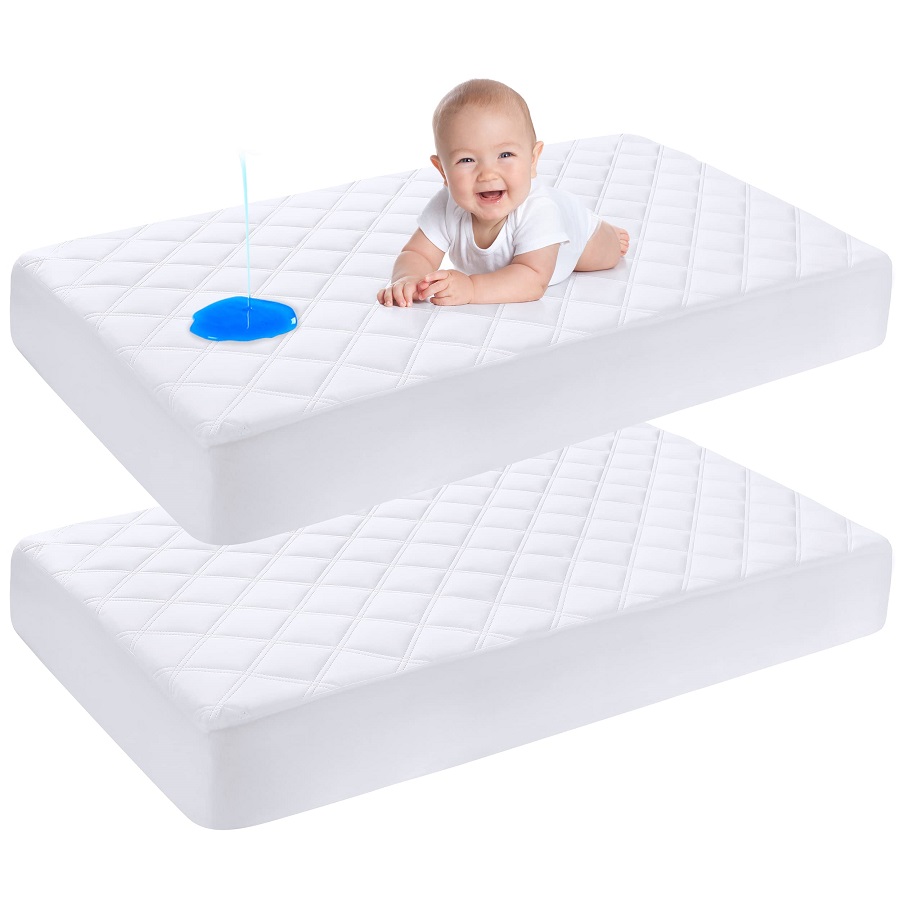
Key Factors in Choosing a Crib Mattress
Choosing the right crib mattress is about more than just size. It affects your baby’s safety and sleep quality. Here are the key factors every parent should consider.
The Importance of Fit and Safety
A good mattress fit is tight with no gaps. Gaps can be a safety risk for your baby. Measure your crib and mattress carefully to ensure they match well. A snug fit within the crib frame is critical to prevent any risk of entrapment or suffocation. Make sure you can’t fit more than two fingers between the mattress and crib side.
Firmness and Why It Matters
A firm mattress is safer for a baby. It reduces the risk of suffocation and helps with development. Test the firmness by pressing it. If it springs back quickly, it’s good. Firm mattresses also help as your baby learns to move and stand. They give solid resistance for these new skills.
The Role of Breathability
Breathable mattresses keep air flowing. This lowers the risk of overheating and suffocation. Choose a mattress with good airflow to help regulate your baby’s temperature during sleep. This not only keeps them comfortable but also safer throughout the night.
Thickness and Support
Thickness is also key for crib safety. Keep mattress thickness between 4 to 6 inches. A thicker mattress might allow a baby to climb out of the crib. It should also be sturdy enough to support your baby without sagging. Consistent support across the mattress is necessary for your baby’s safety and comfort.
Shape-Specific Crib Mattress Concerns
Crib mattresses come in various shapes beyond the standard rectangle. Round, oval, and uniquely shaped cribs need special mattresses to fit their dimensions. Parents should know these types can be harder to shop for due to their uncommon sizes.
Round, Oval, and Unique Shaped Cribs
Shaped cribs stand out with their design. They often come with a mattress to ensure a proper fit, which is essential for safety. If you choose a shaped crib, expect fewer options for sheets and accessories. Always double-check the mattress fits with no gaps to avoid any safety risks.
Assessing Shape Compatibility and Safety
When buying a mattress for a non-standard crib, measurement is crucial. Ensure it fits snugly without leaving space where a baby could potentially get stuck. If the crib did not come with a mattress, you might need to order a custom size for a perfect fit. Remember, no more than two fingers should fit between the mattress and the crib.
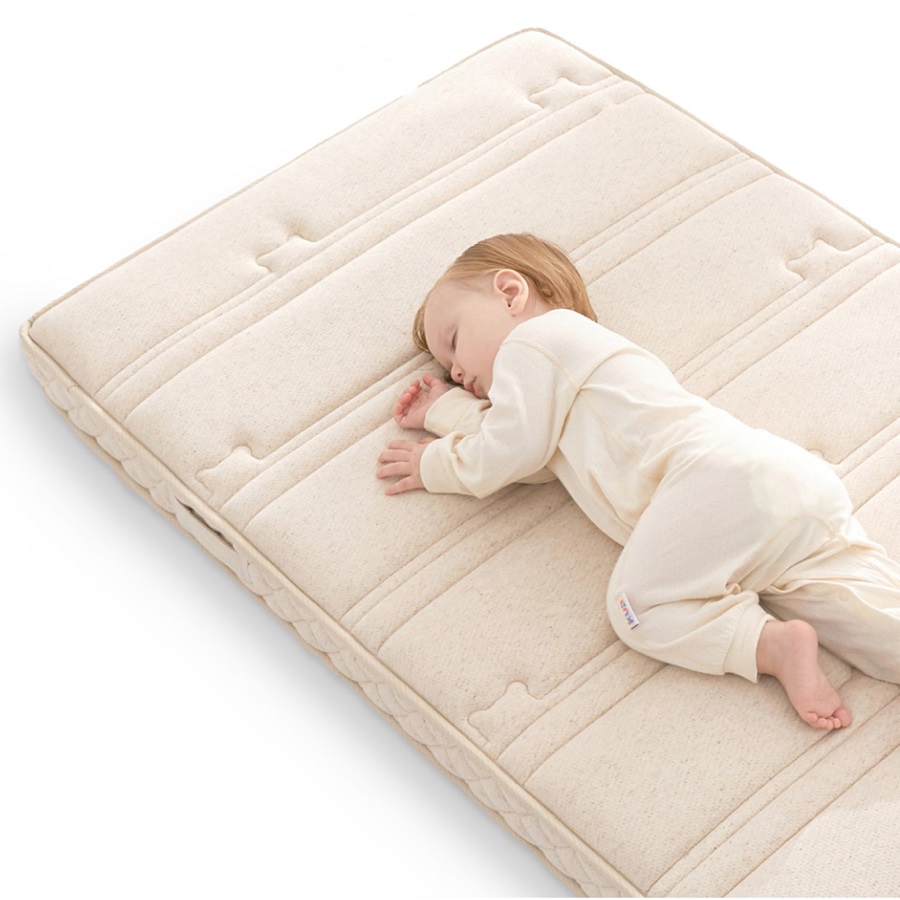
Additional Considerations When Selecting a Crib Mattress
Choosing a crib mattress involves more than size and shape. Think about these extra factors.
The Pros and Cons of Convertible Cribs
Convertible cribs offer a long-term sleeping solution. They change to toddler beds as your child grows. But, they can be more costly upfront. And, they might limit style changes in your child’s room over time.
Considering Longevity and Cost-Effectiveness
Select a mattress that will last. Some are dual-sided: firm for babies, softer for toddlers. A good mattress may be more expensive. But, it saves you money in the long run. You won’t need to replace it often.
Non-Toxic and Hypoallergenic Options
Safety isn’t just about fit and firmness. Consider materials, too. Pick a mattress free from harmful chemicals. Hypoallergenic choices are key for babies with allergies. They keep sleep time safe and healthy.
Ensuring a Safe Sleep Environment
Creating a safe sleep space for your baby is vital. Follow strict guidelines to keep them secure.
Safe Sleep Practices and Standards
Choose the right crib and mattress to prevent hazards. Follow recognized safe sleep standards closely. Keep the crib clear of toys and loose bedding. Place your baby on their back for bedtime and naps. Make sure the crib is away from cords and windows.
When to Transition to a Toddler Bed
Watch for climbing or reaching the crib sides. This means it’s time to switch to a toddler bed. Change beds when your child is tall enough to climb out. Typically, this move happens between 18 months and 3 years. Ensure the new bed has side guards for extra safety.
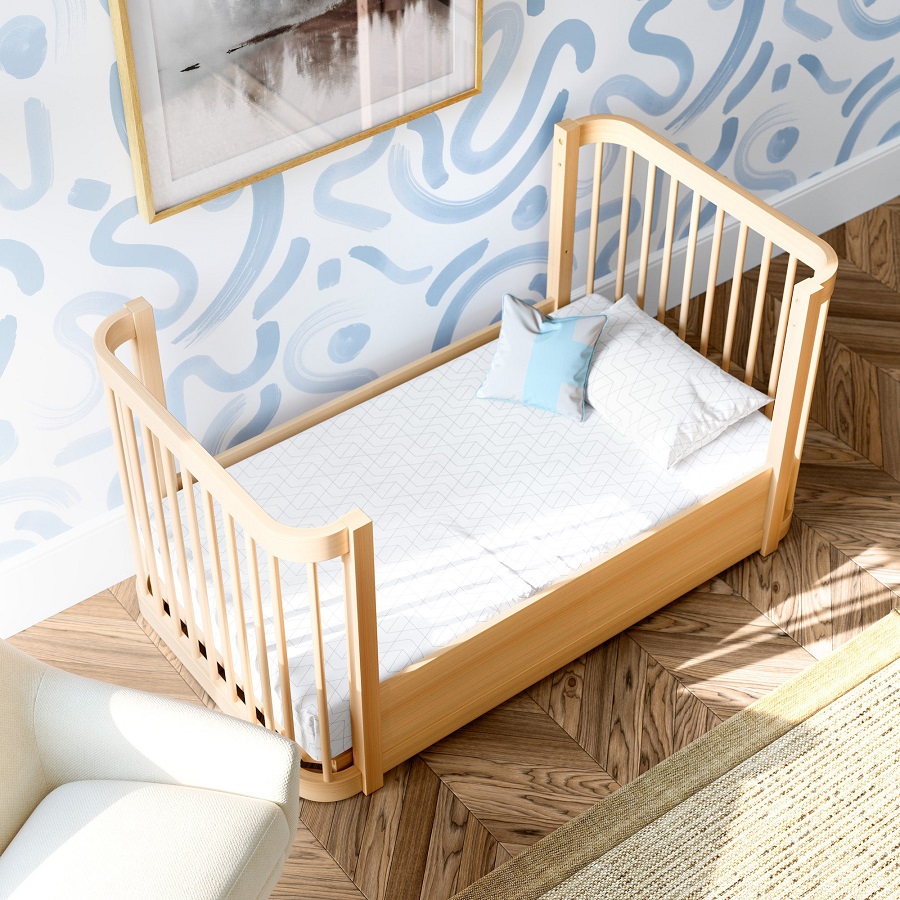
Resources and Further Reading
When you’re preparing for your baby’s arrival, having the right resources makes all the difference. Here are a few tips to guide you further.
Where to Find Quality Crib Mattresses
For quality crib mattresses, start with baby furniture stores and online baby specialty sites. Look for retailers that offer detailed product descriptions and clear safety information. Read customer reviews for firsthand experiences. Big-box stores may carry a range of crib mattresses too, but ensure they meet safety standards. Research brands known for commitment to safety and comfort. Don’t hesitate to ask for recommendations from fellow parents or childcare experts.
Understanding Certifications and Standards
When buying a crib mattress, check for certifications like Greenguard Gold or CertiPUR-US. These indicate low chemical emissions and safe materials. The Consumer Product Safety Commission (CPSC) sets strict regulations for crib mattresses to prevent suffocation and entrapment risks. Keep abreast of American Academy of Pediatrics (AAP) recommendations for infant sleep safety. Learn about global standards if you’re shopping from international brands. Always confirm that the mattress adheres to your country’s safety guidelines. Staying informed means creating the safest sleep environment for your little one.
Choosing the Right Mattress Firmness
When selecting a crib mattress, firmness is one of the most critical factors for your baby’s safety and comfort. A firm mattress provides the best support for an infant’s developing body and reduces the risk of suffocation. Soft mattresses or overly cushioned options can pose a safety hazard by increasing the chances of your baby getting stuck or having difficulty breathing. The American Academy of Pediatrics (AAP) recommends that the mattress be firm, flat, and fitted to the crib without any gaps to reduce any suffocation hazards. Always test the mattress firmness by pressing on it – it should feel firm and bounce back immediately.
Organic and Natural Materials
If you’re concerned about chemicals and synthetic materials, consider choosing an organic or natural crib mattress. Many parents opt for mattresses made with organic cotton, wool, or latex, as these materials are less likely to contain harmful flame retardants or toxic chemicals. Look for certifications like GOTS (Global Organic Textile Standard) or OEKO-TEX Standard 100 to ensure the materials are safe for your baby. These options might come at a higher cost, but they can offer peace of mind knowing that your baby is sleeping on a more natural surface.
How to Care for Your Baby’s Mattress
Maintaining a clean crib mattress is essential for your baby’s health. Regularly vacuum the mattress to remove dust, allergens, or debris. You should also wipe the surface with a mild, baby-safe cleaner or a damp cloth if necessary. To protect the mattress from spills or accidents, consider using a waterproof mattress protector. Make sure that the protector fits snugly around the mattress to prevent it from shifting. Always follow the manufacturer’s care instructions to extend the lifespan of the mattress and keep it in the best condition for your baby’s use.






